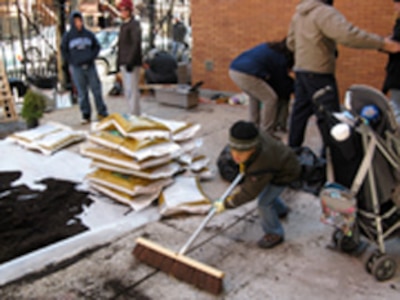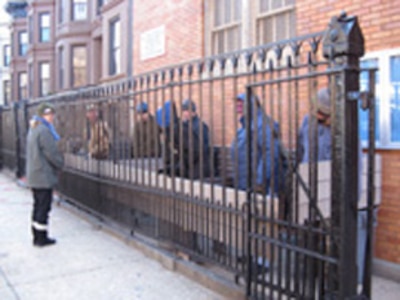Our last post featured Michele Israel, a parent at PS 107 in Park Slope, Brooklyn, who was instrumental in starting an edible garden at her school: We spoke with Michele about the planning stage and how crucial it is to win the support of your principal, custodial engineer, PTA board, parents and teachers. This week Michele will help us identify start-up costs and sources for funding.

Michele’s first recommendation is to “start small,” with maybe just a couple of beds to see how much work is involved and how enthusiastically the garden is received by the school community. Michele estimates it will take anywhere from six months to a year to research the materials you will need for your garden and find capital. In the case of PS 107, members of their volunteer garden committee were assigned different tasks, such as fundraising, grant research, community outreach, and vendor solicitation. Keep in mind that your start-up costs will be where you spend most of your money as they will include lumber for the beds, soil, seeds and tools. Once you have those materials, the costs for your garden dramatically decrease (unless you decide to expand the garden, which should be part of your consideration when putting together a budget).
The start-up costs for PS 107’s garden were approximately $4,000 and included recycled plastic lumber for their beds, which is significantly more expensive than untreated lumber. If you start small, your costs will probably be closer to $2,000, according to Michele. Helpful sites to check out regarding start-up costs are GreenThumb, Ecoliteracy, School Garden Wizard, and California School Garden Network. Some PTA boards might be willing to contribute funds to the garden, but Michele was determined to keep the garden committee of her school autonomous from the PTA, and so they raised the money themselves.
The first step Michele recommends is registering your garden with GreenThumb, which holds annual seed and plant giveaways; will provide compost if you attend one of its composting workshops; and also offers workshops where you can receive resource guides, pamphlets, and other useful handouts. Other organizations you’ll want to look into are the Brooklyn Botanic Garden’s GreenBridge Community Garden Alliance, Bronx Green Up of the New York Botanical Garden, Green Guerillas, and GrowNYC.
Michele has also spent and continues to spend long stretches of time at her computer visiting gardening websites and signing up for gardening newsletters to price materials, find great deals and get general tips. All her research has led her to discover that you never need to buy seeds. As Michele says, “Get them donated. Most garden centers unload their seeds in the summer.” And you don’t need to worry about the expiration dates either: As Michele explained, “Seeds last quite a while, especially if kept in a cool dry place.” A source for seeds she recommends is the America the Beautiful Fund.
It became obvious from our conversation with Michele that researching and writing grants make up an enormous amount of the “school garden experience.” Although we can’t spare you the ordeal of writing a grant (maybe someone on your PTA or a grant writer at your school can), we can save you time with the research. Michele has been generous enough to share with NYC Green Schools a list she has compiled about possible funding sources for school gardens, which you can read here. The list includes garden, environmental, nutrition, and science grants that are available as well as grant search websites.

In addition to grants, PS 107 also received discounts on materials from local community vendors. A local lumber company greatly discounted the recycled plastic lumber they used for their planters. Michele says, “The trick is reaching out, making a good pitch, expressing need if there is one and telling vendors where they will be acknowledged (website, parent e-mail, newsletter, etc.).” In her opinion, most places will help out. And she adds, “Always write a thank-you note on letterhead!” Michele also solicited online for donations of gardening supplies and received donations from parents at the school as well. She attributes much of their garden committee’s fundraising success to the website they created. Michele says, “The website is a very useful tool for fundraising, publicity, acknowledging donors, volunteers. … It is my prime marketing tool.” A website can inspire people to donate money, time, and/or supplies; it’s also very helpful to have when you have to submit your progress report to your grantmaker.
If you’d love to have an edible garden at your school, but your school lacks the space or you don’t have the time to research and write grants, a couple of NYC Green School parents wrote to us about an organization called Wooly Pockets. For $1,000, Wooly Pockets offers a vertical wall system that includes 50 pockets, plant and vegetable seeds, organic soil and a curriculum. And if your school doesn’t have $1,000 for such a project, Wooly Pockets will fundraise for you. All you have to do is put your school’s name on the list! Now there really is no excuse for not having an edible garden at your school.
About our First Person series:
First Person is where Chalkbeat features personal essays by educators, students, parents, and others trying to improve public education. Read our submission guidelines here.
